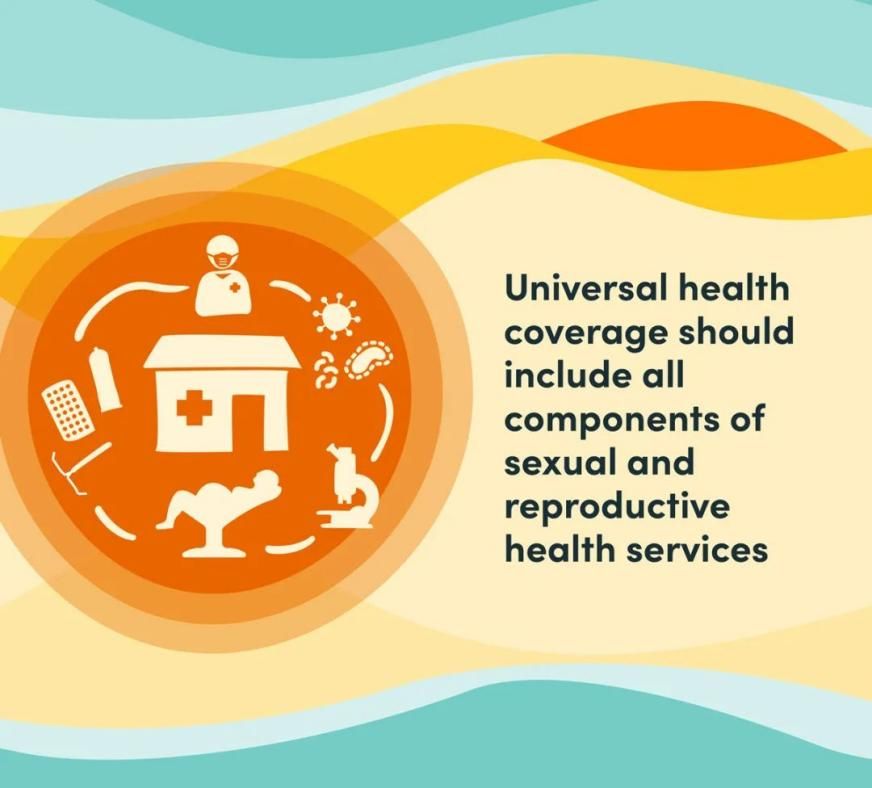Reproductive health runs through entirely our life cycle, which regarded as one of the important indicators of human health by WHO. Meanwhile,"Reproductive health for all" recognized as a UN Sustainable Development Goal. As an important part of reproductive health, the performance of the reproductive system, processes and functions is of concern to every individual male.
01 Risks of reproductive diseases
Reproductive tract infections are a huge threat to male reproductive health, causing infertility in about 15% of patients. It mainly caused by Chlamydia Trachomatis, Mycoplasma Genitalium and Ureaplasma Urealyticum. However, about 50% of men and 90% of women with reproductive tract infections are subclinical or asymptomatic, leading to the prevention and control for transmission of pathogens is neglected. Timely and effective diagnosis of these diseases is therefore conducive to a positive reproductive health environment.
Chlamydia Trachomatis Infection (CT)
Chlamydia trachomatis urogenital tract infection can cause urethritis, epididymitis, prostatitis, proctitis and infertility in men and it can also cause cervicitis, urethritis, pelvic inflammatory disease, adnexitis, and infertility in women. At the same time, infection with Chlamydia trachomatis in pregnant women can lead to premature rupture of membranes, stillbirth, spontaneous abortion, post-abortion endometritis and other phenomena. If not treated effectively in pregnant women, it can be transmitted vertically to newborns, causing ophthalmia, nasopharyngitis and pneumonia. Chronic and repeated genitourinary Chlamydia trachomatis infections tend to develop into diseases, such as cervical squamous cell carcinoma and AIDS.
Neisseria Gonorrhoeae Infection (NG)
The clinical manifestations of Neisseria gonorrhoeae urogenital tract infection are urethritis and cervicitis, and its typical symptoms are dysuria, frequent urination, urgency, dysuria, mucus or purulent discharge. If it is not treated in time, gonococci can enter the urethra or spread upward from the cervix, causing prostatitis, vesiculitis, epididymitis, endometritis, and salpingitis. In severe cases, it can cause gonococcal sepsis by hematogenous dissemination. Mucosal necrosis causing squamous epithelium or connective tissue repair can lead to urethral stricture, vas deferens and tubal narrowing or even atresia and even to ectopic pregnancy and infertility in both men and women.
Ureaplasma Urealyticum Infection (UU)
Ureaplasma urealyticum is mostly parasitic in the male urethra, the foreskin of the penis, and the female vagina. It can cause urinary tract infections and infertility under certain conditions. The most common disease caused by ureaplasma is nongonococcal urethritis, which accounts for 60% of nonbacterial urethritis. It can also cause prostatitis or epididymitis in men, vaginitis in women, cervicitis, premature birth, low birth weight, and can also cause infections of the respiratory and central nervous systems of newborns.
Herpes Simplex Virus Infection (HSV)
Herpes simplex virus, or herpes, is divided into two categories: herpes simplex virus type 1 and herpes simplex virus type 2. Herpes simplex virus type 1 causes oral herpes mainly through mouth-to-mouth contact, but can also cause genital herpes. Herpes simplex virus type 2 is a sexually transmitted infection that causes genital herpes. Genital herpes can recur and have a greater influence on patients’ health and psychology. It can also infect newborns through placenta and birth canal, leading to congenital infection of newborns.
Mycoplasma Genitalium Infection (MG)
Mycoplasma genitalium is the smallest known self-replicating genome organism at only 580kb and is widely found in humans and animal hosts. In sexually active young people, there is a strong correlation between urogenital tract abnormalities and Mycoplasma genitalium, with up to 12% of symptomatic patients being positive for Mycoplasma genitalium. Besides, pepole infected Mycoplasma Genitalium can also develope into non-gonococcal urethritis and chronic prostatitis. Mycoplasma genitalium infection is an independent causative agent of cervical inflammation for women and is associated with endometritis.
Mycoplasma Hominis Infection (MH)
Mycoplasma hominis infection of the genitourinary tract can cause diseases such as non-gonococcal urethritis and epididymitis in men. It manifests as inflammation of the reproductive system in women that spreads centered on the cervix, and a common comorbidity is salpingitis. Endometritis and pelvic inflammatory disease may occur in a small number of patients.
02 Solution
Macro & Micro-Test has been deeply engaged in the development of urogenital tract infection related disease detection reagents, and has developed related detection kits (Isothermal Amplification Detection method) as follows:
03 Product Specification
|
Product Name |
Specification |
| Chlamydia Trachomatis Nucleic Acid Detection Kit (Enzymatic Probe Isothermal Amplification) |
20 tests/kit 50 tests/kit |
| Neisseria Gonorrhoeae Nucleic Acid Detection Kit (Enzymatic Probe Isothermal Amplification) |
20 tests/kit 50 tests/kit |
| Ureaplasma Urealyticum Nucleic Acid Detection Kit(Enzymatic Probe Isothermal Amplification) |
20 tests/kit 50 tests/kit |
| Herpes Simplex Virus Type 2 Nucleic Acid Detection Kit (Enzymatic Probe Isothermal Amplification) |
20 tests/kit 50 tests/kit |
04 Advantages
1. Internal control is introduced into this system, which can comprehensively monitor the experimental process and ensure the quality of the experiment.
2. Isothermal Amplification Detection method shorter test time, and the result can be obtained within 30 minutes.
3. With Macro & Micro-Test Sample Release Reagent and Macro & Micro-Test Automatic Nucleic Acid Extractor (HWTS-3006), it is easy to operate and suitable for a variety of scenarios.
4. High sensitivity: the LoD of CT is 400copies/mL; the LoD of NG is 50 pcs/mL; the LoD of UU is 400copies/mL; the LoD of HSV2 is 400 copies/mL.
5. High specificity: no cross-reactivity with other related common infectious agents (such as syphilis, genital warts, chancroid chancre, trichomoniasis, hepatitis B and AIDS).
References:
[1] LOTTI F,MAGGI M.Sexual dysfunction and male infertility [J].NatRev Urol,2018,15(5):287-307.
[2] CHOY JT,EISENBERG ML.Male infertility as a window to health[J].Fertil Steril,2018,110(5):810-814.
[3] ZHOU Z,ZHENG D,WU H,et al.Epidemiology of infertility in China:apopulation-based study[J].BJOG,2018,125(4):432-441.
Post time: Nov-04-2022

